Go North Young Pup
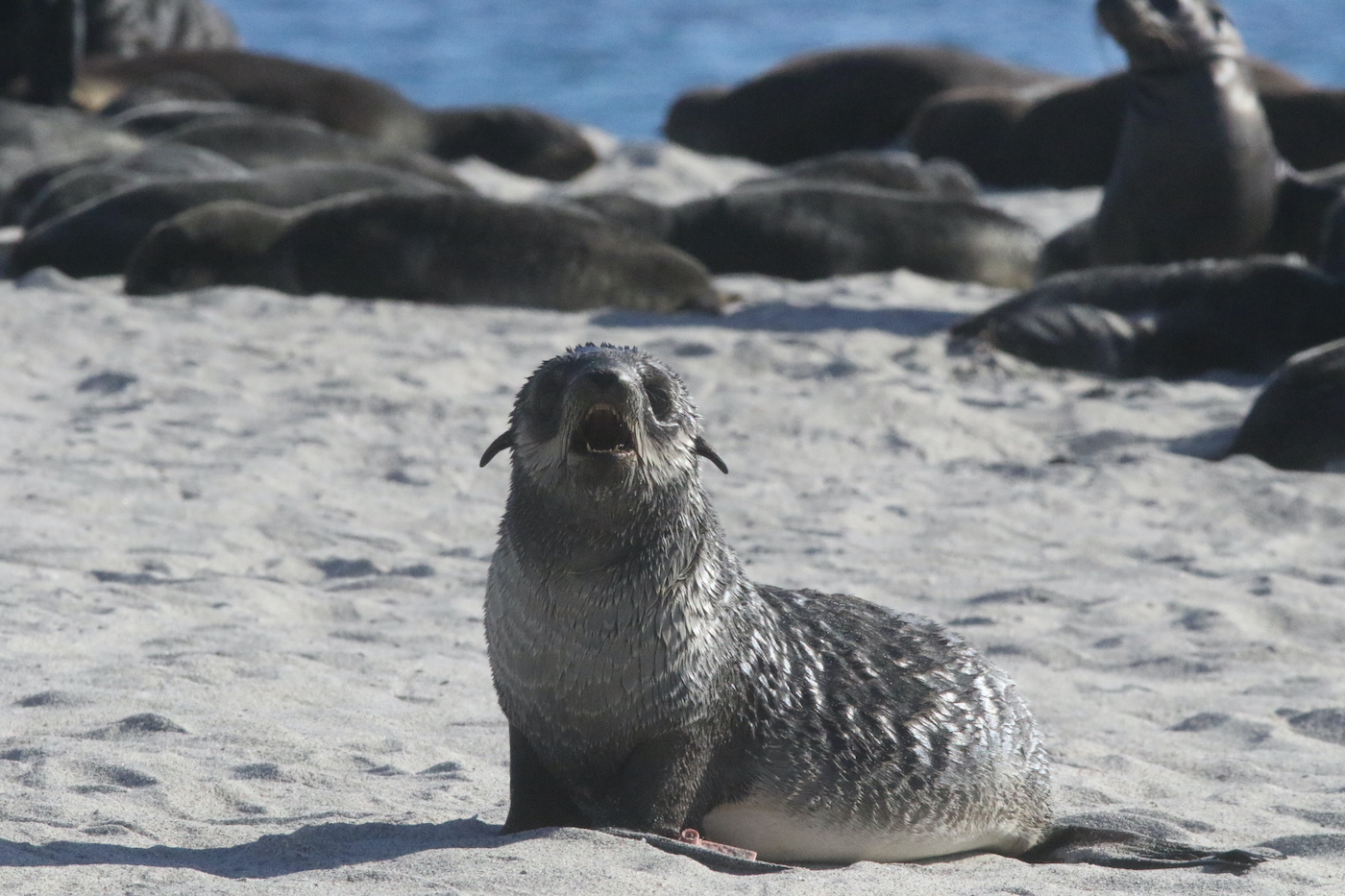
They were a long way from home – a long way from the “Great North” – those distant, pelagic habitats northern fur seals thrive in. Strong ocean currents had firmly gripped these three beleaguered pups that were now seven months old. Malnourished and fatigued, they were discovered by beachgoers on Los Angeles County beaches. Now they were being shuttled back to their open ocean environs.
Before boarding the Island Packers ferry, these three pups had spent a month rehabbing in a marine mammal rescue center in Los Angeles. The two younger fur seal pups shared one crate while transported. The other, larger pup was in a crate by itself.
The three rambunctious pups with big brown eyes gazed at the steady stream of curious onlookers boarding the ferry. Beyond their two-hour boat ride, they were released at Pelican Bay located on the northside of Santa Cruz Island. Ready to fend for themselves, that innate tug hopefully propelled them approximately 45 miles to the west and Point Bennett, their most southernly breeding and pupping rookery on San Miguel Island. Beyond that windswept isle, these three pups will hopefully one day survive their migration to Alaska and their major feeding grounds off the Pribilof Islands and other islets in the Bering Sea.
“San Miguel Island, in general, but especially the west end of the island (Point Bennett) is a great place for pinnipeds, primarily because the marine environment around the island is influenced by the California Current,” said Tony Orr, a research fisheries biologist for the National Oceanic Atmospheric Association (NOAA). “Upwelling, and unobstructed prevailing northwest winds produce cold surface waters, fog, and wind conditions that keep the island cool during the summer months, when some of these species pup and breed.”
Bears of the Sea
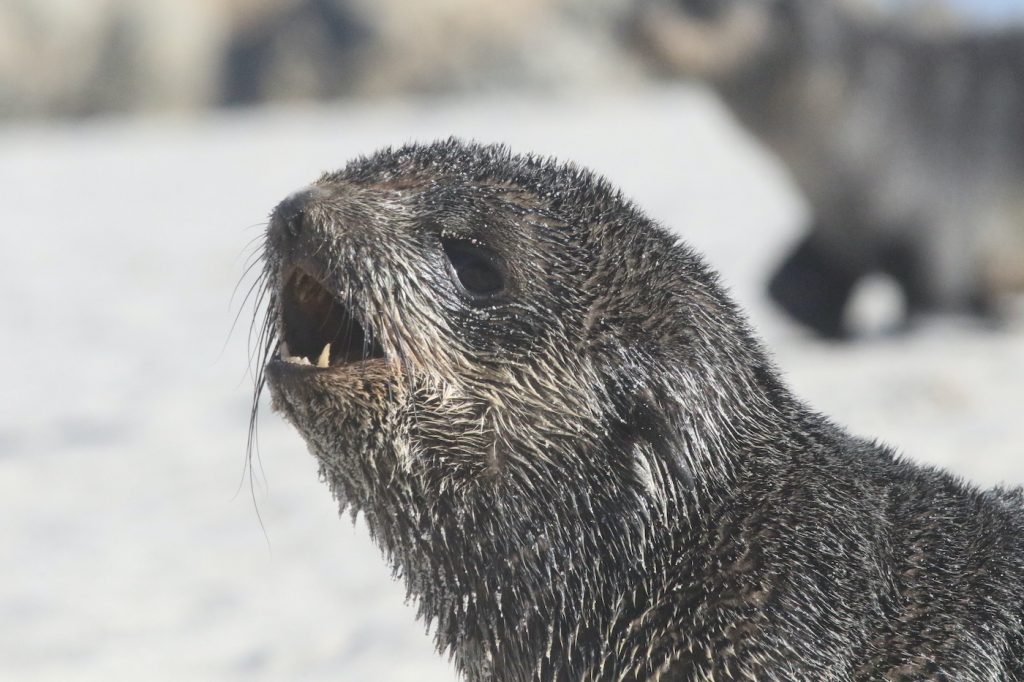
Their scientific name is Callorhinus ursinus meaning “bear-like.” They were given the name “sea bear” by Europeans. Their name refers to their ultra-thick fur, giving them that bear-like appearance. This is especially true of the males that can reach 600 pounds, but also for their cantankerous demeanor on beaches where they defend precious territories and harems.
With that bear-like appearance, the mature males saunter back and forth on remote coastlines, their dark, furry coats on display, while keeping their pups and females in check. Their fur is what almost drove them to extinction in the 1800s. Northern fur seals possess 300,000 hairs per square inch, and those furs were highly sought after by Europeans.
About 10,000 northern fur seals come to breed, pup, and haul out at Point Bennett. Most of those animals are observed at Adams Cove in the southerly corner of the rookery. The summer and fall months are crowded there, the drama of fur seal pups playfully squabbling, mothers and pups reuniting to nurse, and the bulls patrolling the beaches are constant.
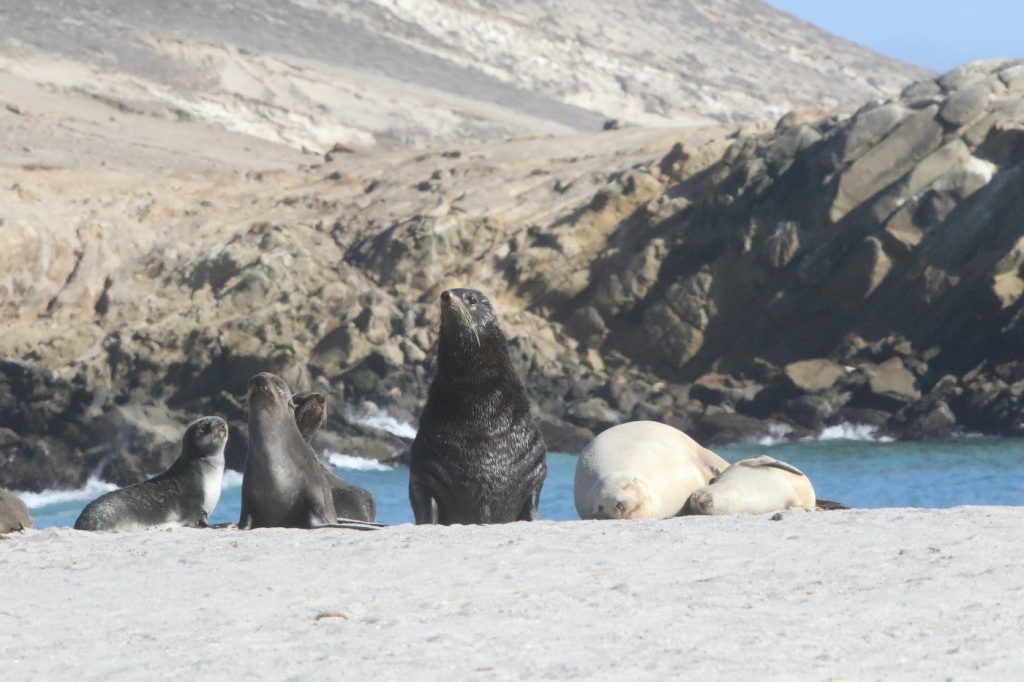
Sea bears sunning 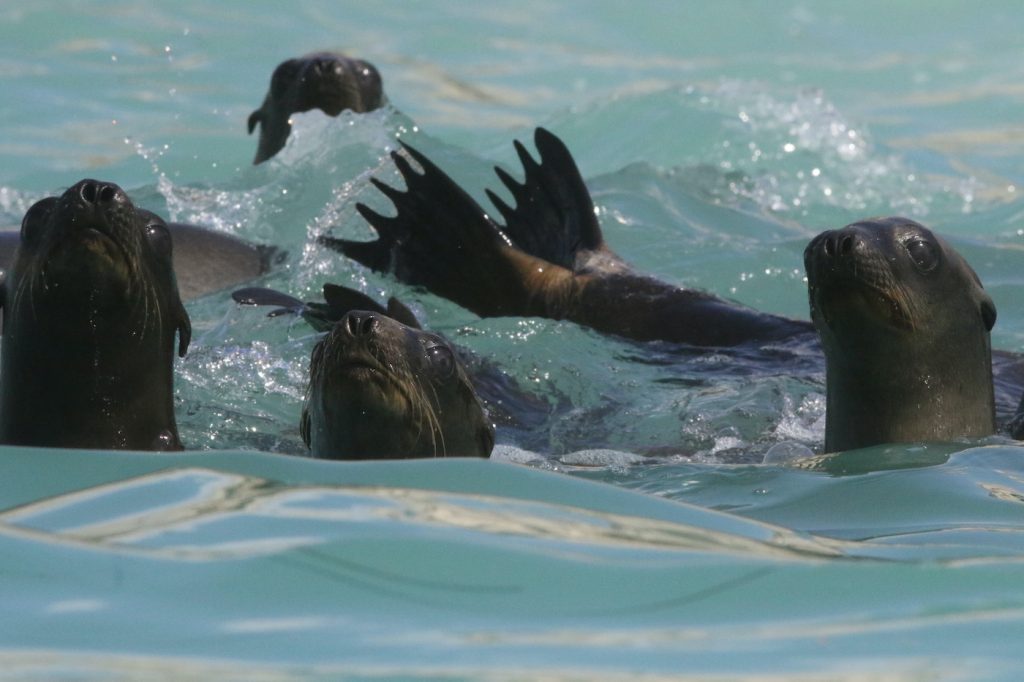
Curious fur seals make their way towards the kayak
When northern fur seals began their recovery from near extinction in the early 1900s, some of the first fur seals to arrive at Point Bennett were animals that had been tagged on the Pribilof Islands. Today, the fur seal pups at Point Bennett are also tagged.
“We place pink tags on the fur seal pups as a way to mark them for survival and vital rate studies,” continued Orr. “We can follow these individuals for the rest of their lives (or until they lose their tags in the case of the fur seals).”
However, they are not known as “sea bears” for nothing. These amazing pinnipeds spend most of their time in the open ocean. They are only at their rookeries to breed and pup unless they get sick or fatigued and end up on an L.A. County beach.
While in open ocean they are solitary and nocturnal, but they see well with those big, brown eyes. Depending on where they are geographically, they’ll go after several squid species, Atka mackerel, Pacific salmon, Pacific herring, and other oceanic fish.
First Encounter
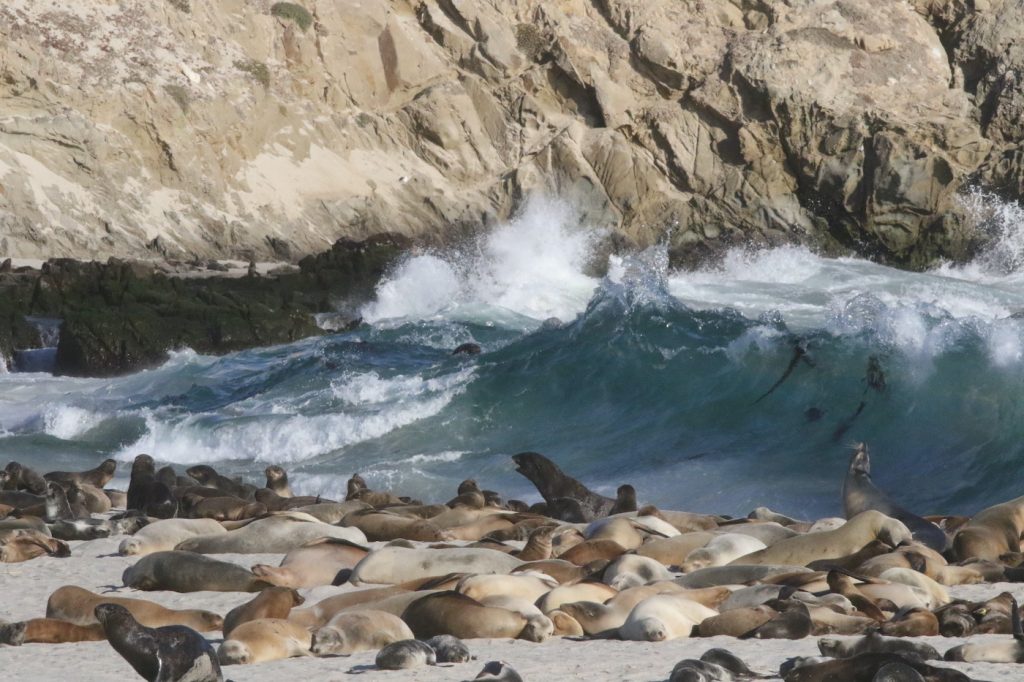
While working as a volunteer ranger on San Miguel Island, I always look for a solid weather window to kayak around the 27 coastal miles of the windswept isle. One of the highlights is sitting in my kayak in the kelp forests off Adams Cove amongst hundreds of pinnipeds.
The northern fur seal pups can’t help themselves. They are the most curious of the six pinniped species that breed, pup, and haul out at Point Bennett. Born in June, by the time I get there in October they are four months old. Because of the location and its exposure to wind, fog, and swell, paddling to Point Bennett can be quite a challenge, so it’s more than likely the fur seal pups have never seen a kayaker before.
The seal pups torpedo towards my kayak, bobbing, and straining their necks for a good look at this paddler smeared in sunscreen, while floating above the dense canopy of giant bladder kelp. I always enjoy their pushed in, stubby muzzles, their large, attentive eyes, and their external earflaps giving them that Yoda-like appearance.
I could stay there all day with the fur seal pups. However, with unpredictable weather constantly swirling around San Miguel Island, I float amongst them for only an hour before kayaking back to idyllic Cuyler Harbor being my safe haven on the remote isle.







